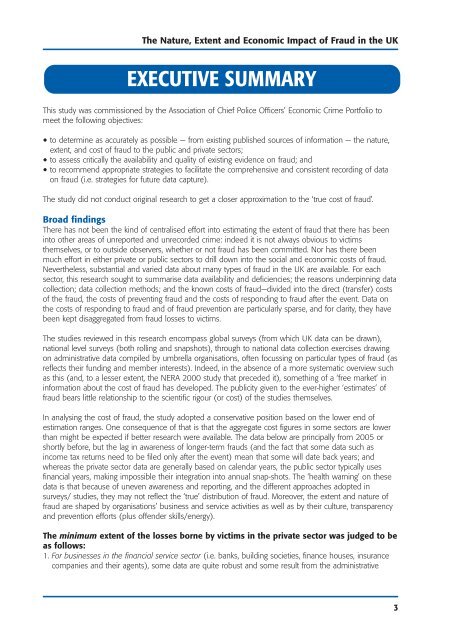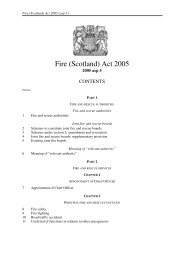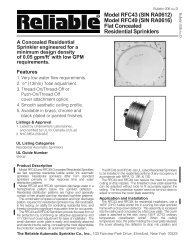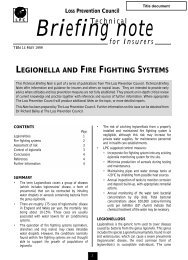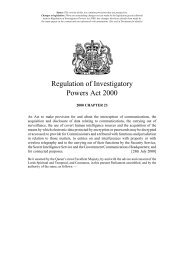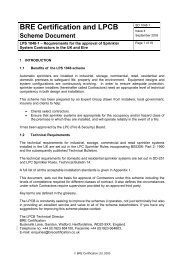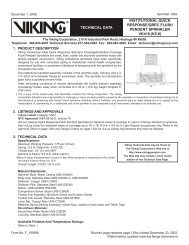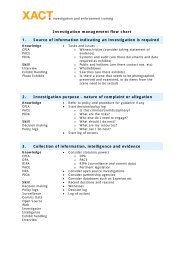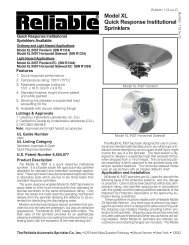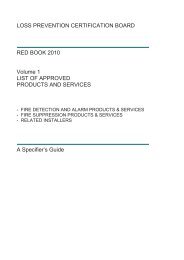The Nature, Extent and Economic Impact of ... - Cardiff University
The Nature, Extent and Economic Impact of ... - Cardiff University
The Nature, Extent and Economic Impact of ... - Cardiff University
Create successful ePaper yourself
Turn your PDF publications into a flip-book with our unique Google optimized e-Paper software.
<strong>The</strong> <strong>Nature</strong>, <strong>Extent</strong> <strong>and</strong> <strong>Economic</strong> <strong>Impact</strong> <strong>of</strong> Fraud in the UK<br />
EXECUTIVE SUMMARY<br />
This study was commissioned by the Association <strong>of</strong> Chief Police Officers’ <strong>Economic</strong> Crime Portfolio to<br />
meet the following objectives:<br />
5 to determine as accurately as possible — from existing published sources <strong>of</strong> information — the nature,<br />
extent, <strong>and</strong> cost <strong>of</strong> fraud to the public <strong>and</strong> private sectors;<br />
5 to assess critically the availability <strong>and</strong> quality <strong>of</strong> existing evidence on fraud; <strong>and</strong><br />
5 to recommend appropriate strategies to facilitate the comprehensive <strong>and</strong> consistent recording <strong>of</strong> data<br />
on fraud (i.e. strategies for future data capture).<br />
<strong>The</strong> study did not conduct original research to get a closer approximation to the ‘true cost <strong>of</strong> fraud’.<br />
Broad findings<br />
<strong>The</strong>re has not been the kind <strong>of</strong> centralised effort into estimating the extent <strong>of</strong> fraud that there has been<br />
into other areas <strong>of</strong> unreported <strong>and</strong> unrecorded crime: indeed it is not always obvious to victims<br />
themselves, or to outside observers, whether or not fraud has been committed. Nor has there been<br />
much effort in either private or public sectors to drill down into the social <strong>and</strong> economic costs <strong>of</strong> fraud.<br />
Nevertheless, substantial <strong>and</strong> varied data about many types <strong>of</strong> fraud in the UK are available. For each<br />
sector, this research sought to summarise data availability <strong>and</strong> deficiencies; the reasons underpinning data<br />
collection; data collection methods; <strong>and</strong> the known costs <strong>of</strong> fraud—divided into the direct (transfer) costs<br />
<strong>of</strong> the fraud, the costs <strong>of</strong> preventing fraud <strong>and</strong> the costs <strong>of</strong> responding to fraud after the event. Data on<br />
the costs <strong>of</strong> responding to fraud <strong>and</strong> <strong>of</strong> fraud prevention are particularly sparse, <strong>and</strong> for clarity, they have<br />
been kept disaggregated from fraud losses to victims.<br />
<strong>The</strong> studies reviewed in this research encompass global surveys (from which UK data can be drawn),<br />
national level surveys (both rolling <strong>and</strong> snapshots), through to national data collection exercises drawing<br />
on administrative data compiled by umbrella organisations, <strong>of</strong>ten focussing on particular types <strong>of</strong> fraud (as<br />
reflects their funding <strong>and</strong> member interests). Indeed, in the absence <strong>of</strong> a more systematic overview such<br />
as this (<strong>and</strong>, to a lesser extent, the NERA 2000 study that preceded it), something <strong>of</strong> a ‘free market’ in<br />
information about the cost <strong>of</strong> fraud has developed. <strong>The</strong> publicity given to the ever-higher ‘estimates’ <strong>of</strong><br />
fraud bears little relationship to the scientific rigour (or cost) <strong>of</strong> the studies themselves.<br />
In analysing the cost <strong>of</strong> fraud, the study adopted a conservative position based on the lower end <strong>of</strong><br />
estimation ranges. One consequence <strong>of</strong> that is that the aggregate cost figures in some sectors are lower<br />
than might be expected if better research were available. <strong>The</strong> data below are principally from 2005 or<br />
shortly before, but the lag in awareness <strong>of</strong> longer-term frauds (<strong>and</strong> the fact that some data such as<br />
income tax returns need to be filed only after the event) mean that some will date back years; <strong>and</strong><br />
whereas the private sector data are generally based on calendar years, the public sector typically uses<br />
financial years, making impossible their integration into annual snap-shots. <strong>The</strong> ‘health warning’ on these<br />
data is that because <strong>of</strong> uneven awareness <strong>and</strong> reporting, <strong>and</strong> the different approaches adopted in<br />
surveys/ studies, they may not reflect the ‘true’ distribution <strong>of</strong> fraud. Moreover, the extent <strong>and</strong> nature <strong>of</strong><br />
fraud are shaped by organisations’ business <strong>and</strong> service activities as well as by their culture, transparency<br />
<strong>and</strong> prevention efforts (plus <strong>of</strong>fender skills/energy).<br />
<strong>The</strong> minimum extent <strong>of</strong> the losses borne by victims in the private sector was judged to be<br />
as follows:<br />
1. For businesses in the financial service sector (i.e. banks, building societies, finance houses, insurance<br />
companies <strong>and</strong> their agents), some data are quite robust <strong>and</strong> some result from the administrative<br />
3


